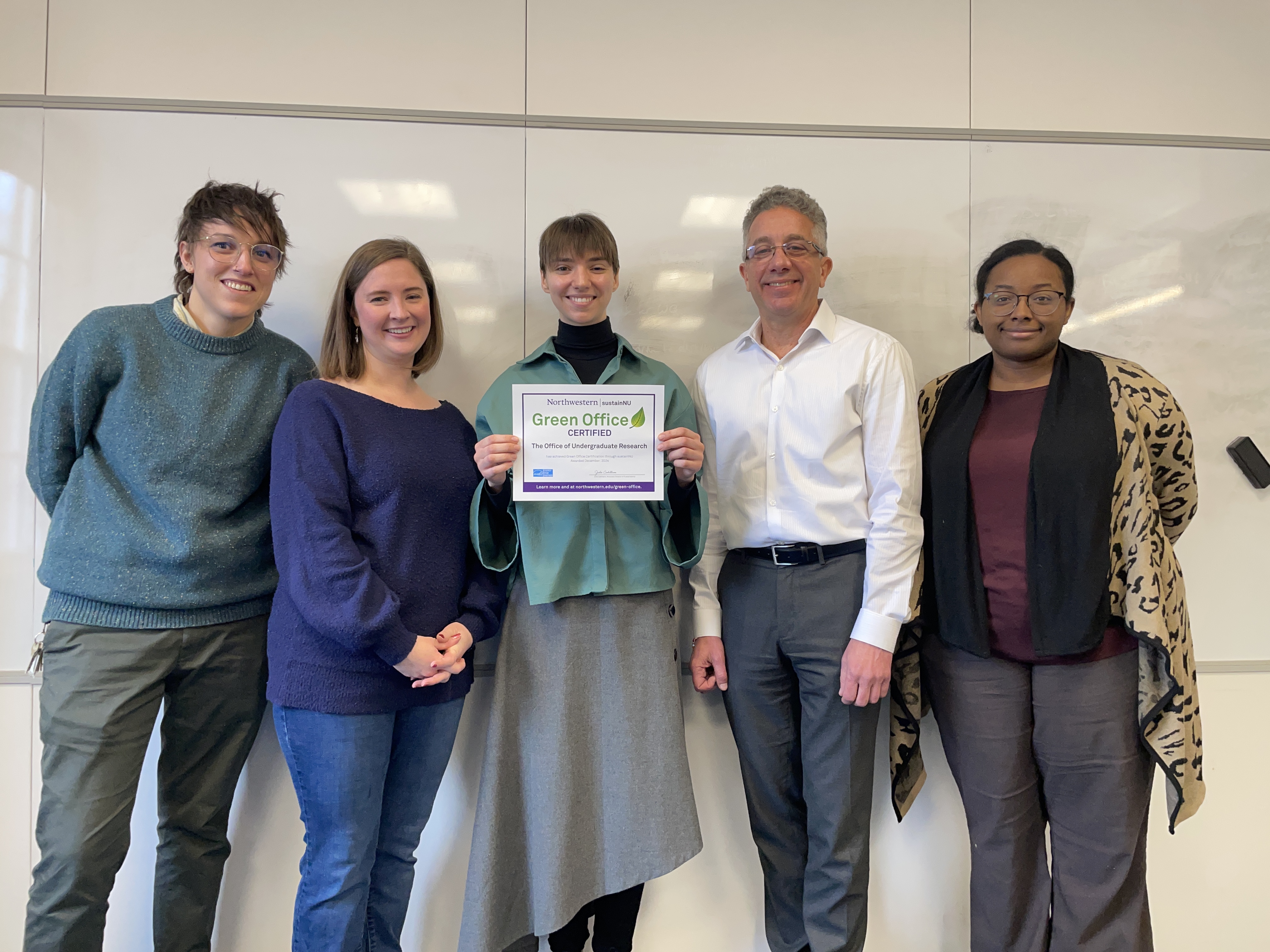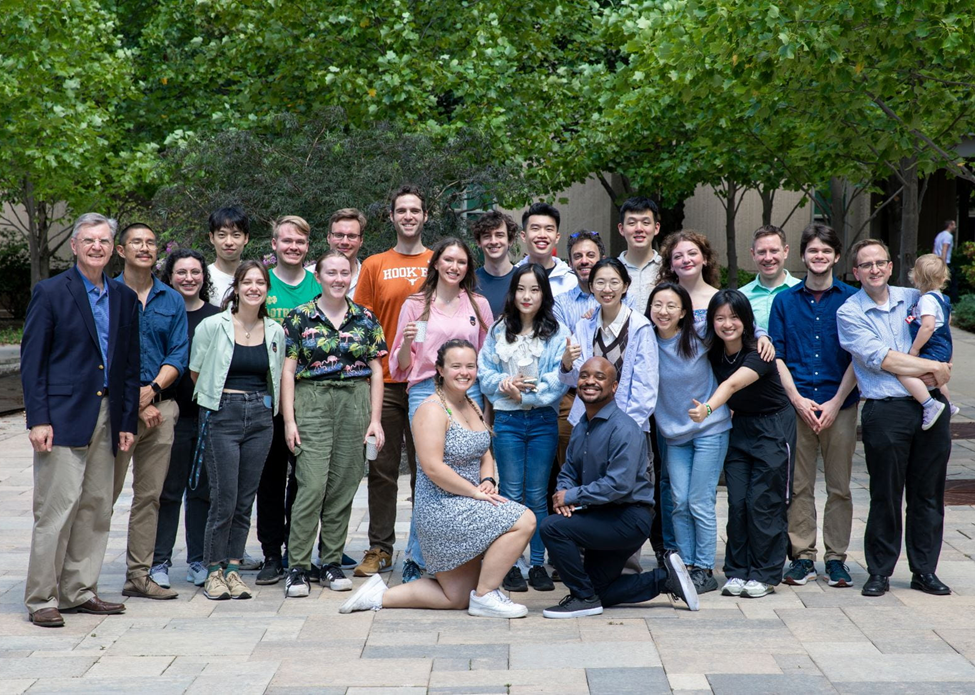Showcasing Sustainability Commitment with new Green Labs and Offices
Congratulations to the most recent recipients of the Green Office & Labs Certification! These groups prove that adopting sustainable practices is both achievable and impactful. By embracing best practices for environmentally-friendly management and operations, they are contributing to a positive and lasting difference for our planet.

The Office of Undergraduate Research (OUR)
The Office of Undergraduate Research is responsible for awarding student research grants and providing comprehensive research support. In addition to the best practices included in the certification, each of the five OUR team members embraced a simple yet impactful waste practice—composting. In partnership with Cats Who Compost (CWC), OUR regularly drops off its compost bucket at one of CWC’s composting stations. OUR aims to bring Green Certification to the entire 1801 Hinman building by cross-departmental collaboration with colleagues from the other departments sharing the space.
The Patel Lab is dedicated to studying the impact of stress and stress-related disorders on brain structure and function. The lab is aware that their activities have environmental impacts, from energy consumption to waste generation. The Patel Lab obtained the Green Labs certification “to inspire others in the scientific community to prioritize environmental responsibility, ensuring that our pursuit of knowledge goes hand in hand with the preservation of our planet.”

The Wasielewski group explores challenges in solar energy and quantum information science. The group applies chemistry knowledge to reduce the environmental impact that comes with lab activities. Specifically, they are finding ways to track their chemical inventory, participate in NU’s eCycling program, and substitute safer solvents. They distilled these best practices into a guide presented to their new members to foster a sustainable lab culture. Through these sustainable habits, the Wasielewski group proves that “reducing [their] environmental impact without compromising the quality of [their] research” is possible.
